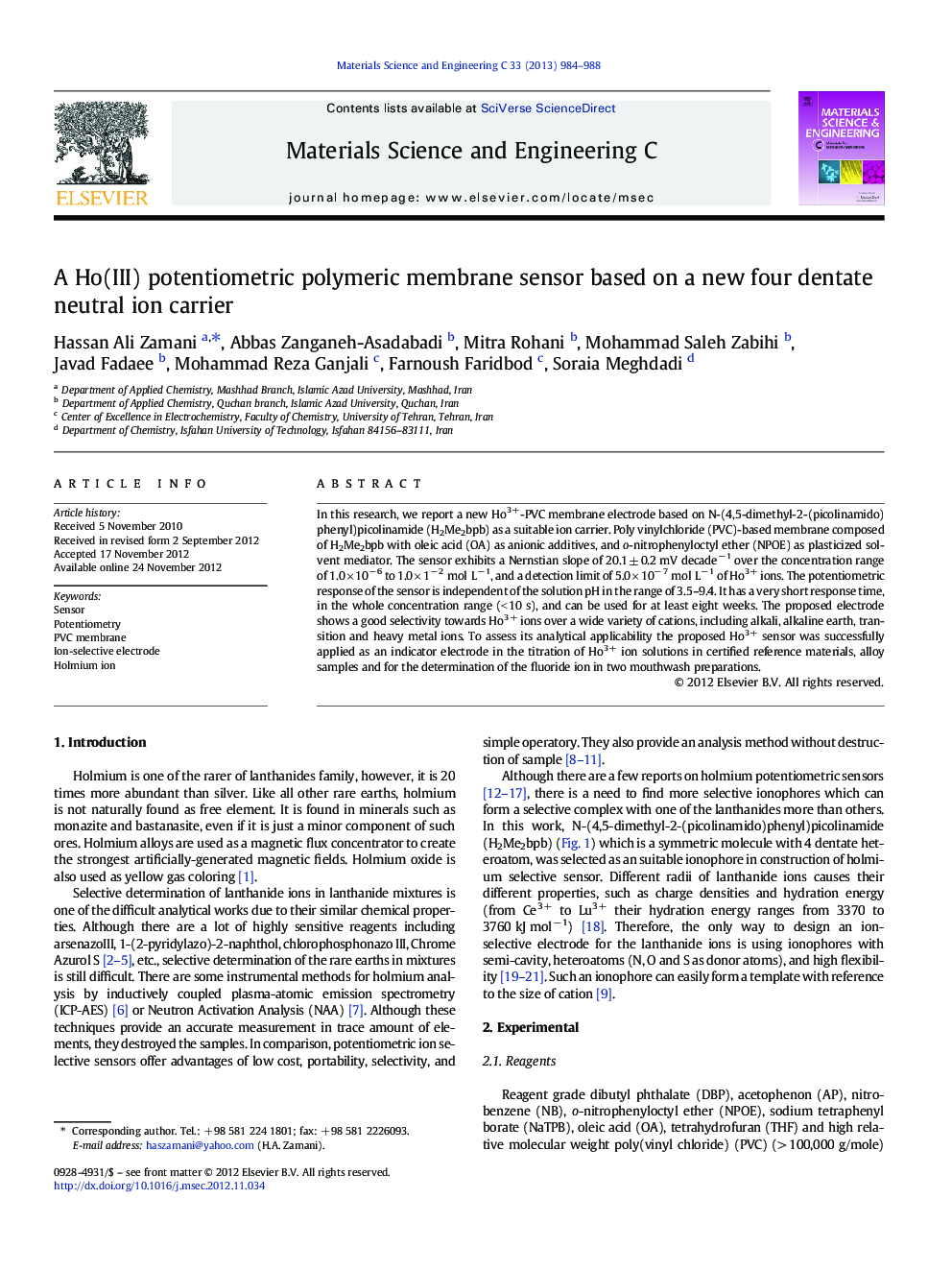| Article ID | Journal | Published Year | Pages | File Type |
|---|---|---|---|---|
| 1428910 | Materials Science and Engineering: C | 2013 | 5 Pages |
In this research, we report a new Ho3 +-PVC membrane electrode based on N-(4,5-dimethyl-2-(picolinamido)phenyl)picolinamide (H2Me2bpb) as a suitable ion carrier. Poly vinylchloride (PVC)-based membrane composed of H2Me2bpb with oleic acid (OA) as anionic additives, and o-nitrophenyloctyl ether (NPOE) as plasticized solvent mediator. The sensor exhibits a Nernstian slope of 20.1 ± 0.2 mV decade− 1 over the concentration range of 1.0 × 10− 6 to 1.0 × 1− 2 mol L− 1, and a detection limit of 5.0 × 10− 7 mol L− 1 of Ho3 + ions. The potentiometric response of the sensor is independent of the solution pH in the range of 3.5–9.4. It has a very short response time, in the whole concentration range (< 10 s), and can be used for at least eight weeks. The proposed electrode shows a good selectivity towards Ho3 + ions over a wide variety of cations, including alkali, alkaline earth, transition and heavy metal ions. To assess its analytical applicability the proposed Ho3 + sensor was successfully applied as an indicator electrode in the titration of Ho3 + ion solutions in certified reference materials, alloy samples and for the determination of the fluoride ion in two mouthwash preparations.
► A Ho3 + PVC membrane sensor was created based on a sensing material. ► The novelty of the work is the high affinity of the used material toward the Ho ions. ► The selectivity of the sensor is superior to the formerly reported Ho3 + sensors.
